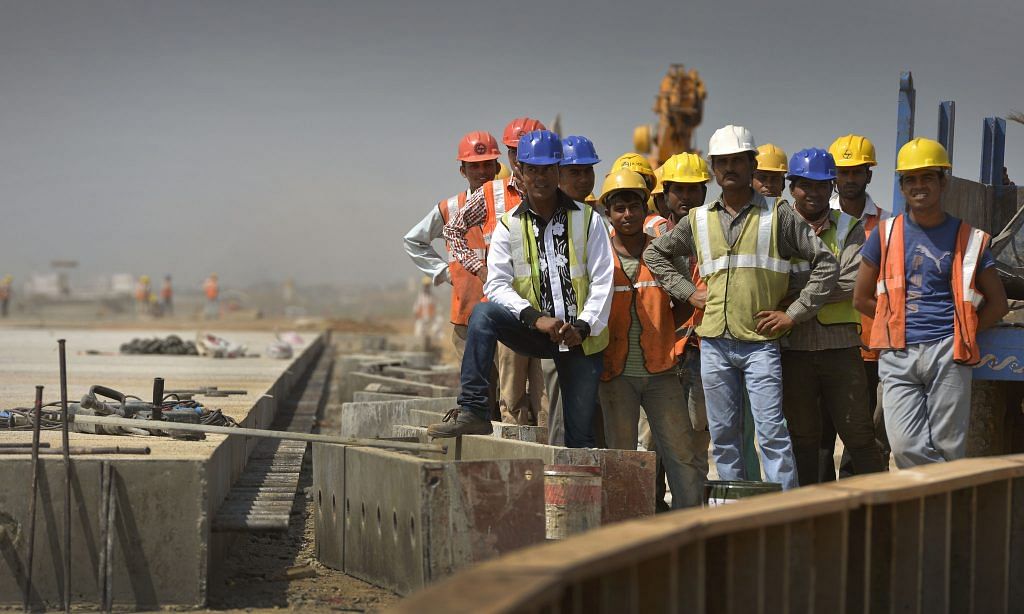Modi’s claims that there exist three lakh village-level entrepreneurs have not been backed up by any data. Read more in this excerpt from Yashwant Sinha and Aditya Sinha’s book.
How did we deal with the issue of employment generation in Vajpayee’s government? Vajpayee had somewhere promised that we would help generate one crore new jobs every year.
There are two ways of generating employment. One is through starting direct employment support schemes like the MNREGA, which was introduced by the UPA government to provide 100 days of paid wage labour per year in rural areas. In my view, MNREGA is an enormous waste of money, and I once told the Lok Sabha that with MNREGA the UPA had set up factories of corruption in every panchayat in the country.
. . .
The other method of employment generation is to impart momentum to the economy. You take up projects that are by nature employment-intensive. What we did in the Vajpayee government, for instance, was to start the national highway project or the rural roads project. We gave money for state highways.
But a large part of our employment generation efforts was through real estate construction. There was tremendous progress in housing especially and real estate generally, which generated a lot of employment. You could see this when you went to a city where the boom was taking place, and looked at the labour force employed. Construction is basically done by surplus agricultural labour. So in Delhi you will see women at construction sites, from rural Delhi and even Rajasthan. Skilled work like plumbing is dominated by migrants from Odisha. Masonry and carpentry are dominated by migrants from Bihar and Uttar Pradesh.
Subcontractors are often from Bihar, who have their own outfits for skilled works. A few such people came to my house one day and when I asked them where they worked they told me they worked in Noida, but also in Delhi and Gurgaon. They said they did plastering work. I was surprised that plastering had so much scope, but they said that large buildings gave them ample work to do. This brought home to me the scale of employment that construction alone generated.
Similarly, the telecom industry underwent an unprecedented expansion during Vajpayee’s time, and provided a lot of employment, as did the railways. We gave Railway Minister Nitish Kumar Rs 17,000 crore for improving existing tracks, the signalling system, existing bridges, etc., all of which had not been upgraded since the British left India. The money was spread over four years and I insisted that the railways should raise a certain amount, through enhancement in passenger fares and freight charges. Nitish agreed. It not only generated employment to carry out these improvements, but the UPA’s railways minister, Lalu Prasad, also benefited: for instance, before improvement a bridge could only carry 60 per cent of its load, but after improvement it could carry 90–95 per cent, so the railways’ business increased when he was in the saddle. That was when the going was good.
When asked about the current jobs crisis, Modi told a magazine in July 2018 that ‘more than a lack of jobs, the issue is the lack of data on jobs’. His complaint was that this lack of data enabled his political opponents to paint a grim picture of employment in the country. He also claimed that there were three lakh village-level entrepreneurs, a claim that has not been backed up by any data.
What is true is that the employment figures come with a lag of three years or so. Vajpayee’s government also used to face the Opposition’s taunts. They asked us where the employment was. Our reply was that all the work that was going on – in roads, construction, telecom, etc. – certainly wasn’t happening by itself, someone was doing it.
Later on, however, we got validation when the figures came out that during the five years of the Vajpayee government, 1999–2004, we created 60 million jobs, which was six crore, or more than a crore jobs per year. That record has not been surpassed either by the UPA regime or by Modi’s regime – simply because the quantum of activity that was happening at the time is not happening now. Of course, the Modi government axed its own foot with demonetization in November 2016 which hit construction the hardest. Not only did construction slow down, but MNREGA went up in the states which sent migrant labour for construction work, like Bihar; the implication was that with work drying up in construction, this labour returned to the villages and sought wage labour under MNREGA.
. . .
The situation now is that if you travel from Noida to Greater Noida, all along the expressway you will see these modern ruins standing testimony to the Modi government’s policies. Instead of generating employment, the government has subjected Indians to de-employment.
